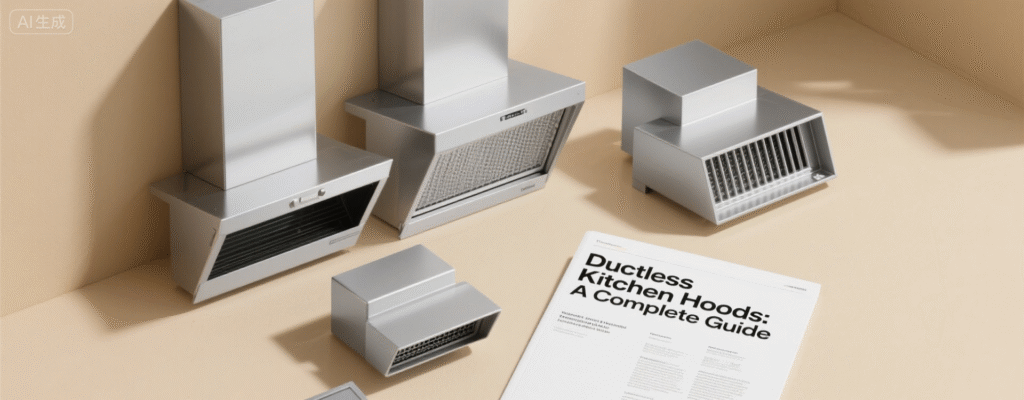For homeowners and renters seeking a powerful kitchen ventilation solution where traditional ducting is impractical, the ductless kitchen exhaust hood offers a compelling alternative. These innovative systems filter and recirculate air directly back into the kitchen, eliminating the need for complex external ductwork. This article will explore the core technology behind these hoods and provide a clear framework for deciding if they are the right choice for your culinary space.
The Recirculation Technology: How Ductless Hoods Purify Air
Unlike their ducted counterparts that expel air outside, a ductless kitchen exhaust hood operates on a recirculation principle. As smoke, steam, and grease-laden air is drawn into the hood, it passes through a series of filters that trap contaminants before releasing the cleaned air back into the room. The effectiveness of this system hinges entirely on its filtration components, which typically consist of a multi-stage process.
The first line of defense is often a metal grease filter, usually made of aluminum or stainless-steel baffles, which captures the bulk of the airborne grease and particulate matter. The second, and most critical, stage is the charcoal filter. These activated carbon filters are responsible for neutralizing odors and absorbing finer particles. The U.S. Environmental Protection Agency (EPA) has long recognized activated carbon as an effective method for adsorbing gaseous pollutants and volatile organic compounds (VOCs), a principle applied in these kitchen systems. It is crucial to note that these charcoal filters are not permanent; their porous structure becomes saturated over time. For optimal performance, most manufacturers and experts, including those at major appliance retailers, recommend replacing them every three to six months, depending on usage.
Evaluating Performance and Ideal Use Cases
The performance of a ductless range hood is measured by its ability to move air, quantified in Cubic Feet per Minute (CFM). However, because the air is not being expelled, the CFM rating tells only part of the story. The true measure of effectiveness lies in the combination of sufficient suction power and meticulously maintained filters. While a high CFM can quickly pull smoke from a searing pan, a spent charcoal filter will do little to remove the accompanying odor.
This inherent characteristic makes ductless hoods best suited for specific scenarios. They are an ideal solution for:
- Interior kitchens without existing ductwork, where installing ducts through walls or ceilings is structurally challenging or prohibitively expensive.
- Rental properties, as they require no permanent modification to the building.
- Homes with powerful secondary ventilation, such as an open window or a central exhaust fan, to help dissipate the recirculated air.
It is important to have realistic expectations. While excellent at reducing general cooking vapors and odors, a ductless kitchen exhaust hood may struggle with the intense smoke and heat generated by frequent high-heat cooking methods like wok-searing or heavy frying. For these applications, a ducted system remains the superior choice for removing heat and contaminants entirely from the home.
In summary, ductless kitchen exhaust hoods provide a vital ventilation service where ducted systems are not feasible, relying on a combination of metal and activated carbon filters to clean and recirculate air. Their efficacy is directly tied to consistent filter maintenance, and they are most effective in kitchens with moderate cooking demands. By understanding their operational principles and limitations, you can make an informed decision on whether this flexible and innovative appliance meets your specific kitchen needs.
